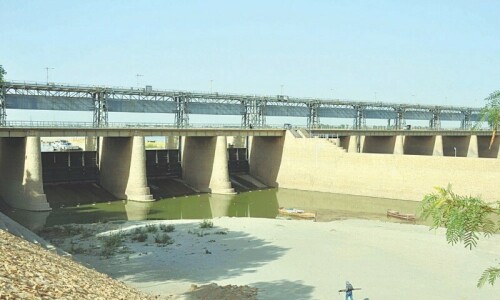ISLAMABAD Interim Interior Minister Dr. Gohar Ejaz called for a comprehensive and efficient system to give inhabitants of the twin cities of Rawalpindi and Islamabad with high-quality facilities on Thursday, pointing out a lack of water and inadequate cleanliness procedures.
The minister made this statement while presiding over a conference about sanitation and water supply in two cities, where it was discovered that there had been a 47% water shortage in each of the cities.
The interior minister stated that as the capital city need to serve as an example for other cities, prompt decisions ought to be taken while also considering future requirements.
وفاقی وزیر داخلہ ڈاکٹر گوہر اعجاز کی زیر صدارت اسلام آباد اور راولپنڈی میں پانی کی فراہمی اور صفائی کے حوالے سے اجلاس، اجلاس میں وفاقی وزیر اطلاعات مرتضیٰ سولنگی کی بھی شرکت، اجلاس میں چیف کمشنر اسلام آباد، لوکل گورنمنٹ ڈیپارٹمنٹ، آر ڈی اے اور کنٹونمنٹ بورڈ کے نمائندگان کی شرکت pic.twitter.com/GlqLbz442V
— Ministry of Interior GoP (@MOIofficialGoP) February 15, 2024
Murtaza Solangi, the acting federal minister for information, broadcasting, and parliamentary affairs, was also present during the meeting. At the meeting, representatives from the local government departments of Rawalpindi and Islamabad gave the ministers an update on the aforementioned two facilities.
Minister dissatisfied with both cities’ levels of cleanliness
Concerns about the worsening water shortage problem in both cities were expressed at the discussion. In the meantime, it was revealed during the meeting that 2300 tons of rubbish are produced everyday in both cities, and that 8000 sanitation workers are assigned with an annual budget of seven billion to dispose of it.
The participants saw that both cities’ cleaning arrangements fall short of expectations despite investing seven billion dollars, thus action needs to be taken to improve.
The minister of information expressed his concerns about the dirty nullahs of Islamabad and stated that both cities need to improve their water supply and sanitary procedures. According to Mr. Solangi, Islamabad’s groundwater table is dropping, therefore maintaining the nullahs’ cleanliness and implementing the greatest sanitation system are essential to raising the groundwater table.
It is important to highlight that both Simly Dam and Khanpur Dam have lower water levels than they had the year before due to less rain. According to a CDA source, Simly Dam had 2291 feet of water available on this day last year; as of right now, the level is 2284 feet. Over the next few days, there is less likelihood of rain. The entire capacity of this dam is 2315 feet. At present, the CDA is only extracting 22 million gallons per day from this dam.
According to the reports, the Khanpur Dam, which feeds water to Islamabad and Rawalpindi, was 1960 feet on this day last year and is currently 1936 feet. With a total storage capacity of 1982 feet, the CDA is currently extracting 7 million gallons of water from this dam.
“The situation is not satisfactory as the water level in both dams has decreased due to less rain,” Director General Sardar Khan Zimri stated.
He declared that he had been trying to do whatever the CDA could to help with the water supply.
According to sources, the CDA may experience a further scarcity of 2 mgd of water in the approaching summer due to the malfunctioning of four tube wells that were located in the path of a section of Margalla Road from D-12 to E-11.
The scarcity of water affects the people of Islamabad every summer.
However, the CDA hasn’t taken any significant action to look into new supplies to meet the citizens’ water needs in the last thirty years.
Background discussions with pertinent personnel revealed that the CDA started a project to import water from Khanpur Dam in the 1990s. When there were about 600,000 people living in Islamabad, this project was the last one to be completed. The capital’s population has climbed to 2.2 million according to the 2017 census, while the water resources remain the same.
Officials from the CDA state that 220 MGD of water is now needed in Islamabad’s rural and urban districts. Up to 60–70 MGD are provided by CDA, primarily from urban areas, from four main sources: tubewells, Khanpur Dam, Simly Dam, and two MGD from Rawal Dam.
The rural residents of the city rely on tubewells, water bores, and a limited water delivery program that the district government started. There is still unfinished work on a number of projects that have been debated for the past 15 years, such as the Ghazi Brotha project, the Khanpur Dam extension, and the Chirrah Dam building.
The goal of the Ghazi Barotha project was to supply Islamabad and Rawalpindi with 100 MGD. The project’s initial cost estimate was Rs 37 billion; it was re-estimated in 2017 to be Rs 77 billion; as of right now, the total cost has increased to Rs 120 billion.
SOURCE: DAWN NEWS








